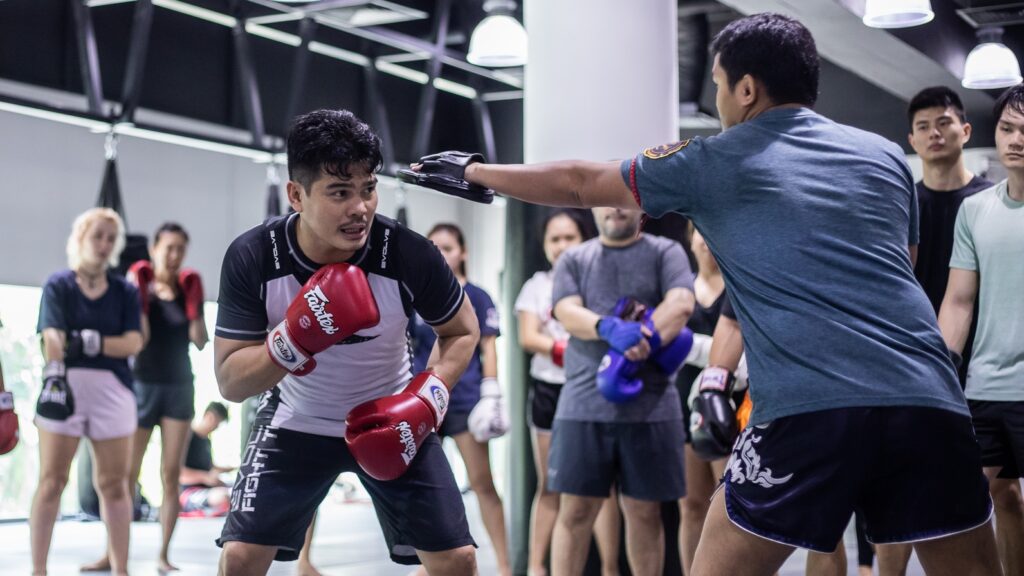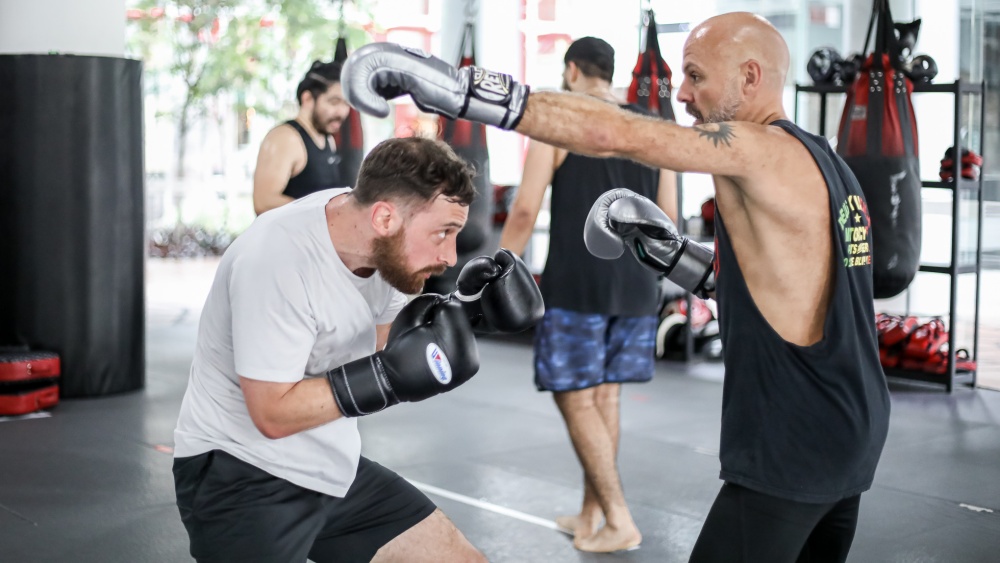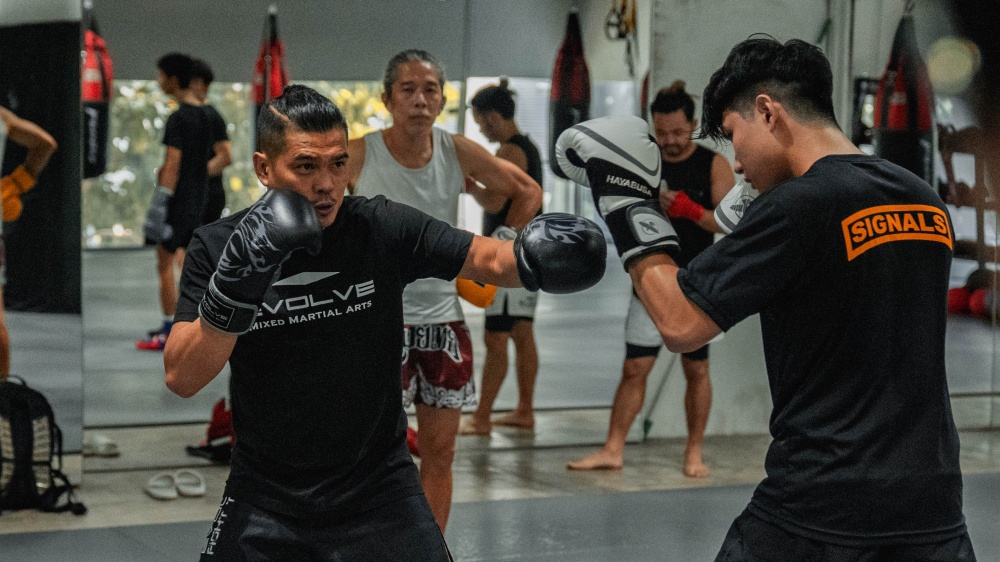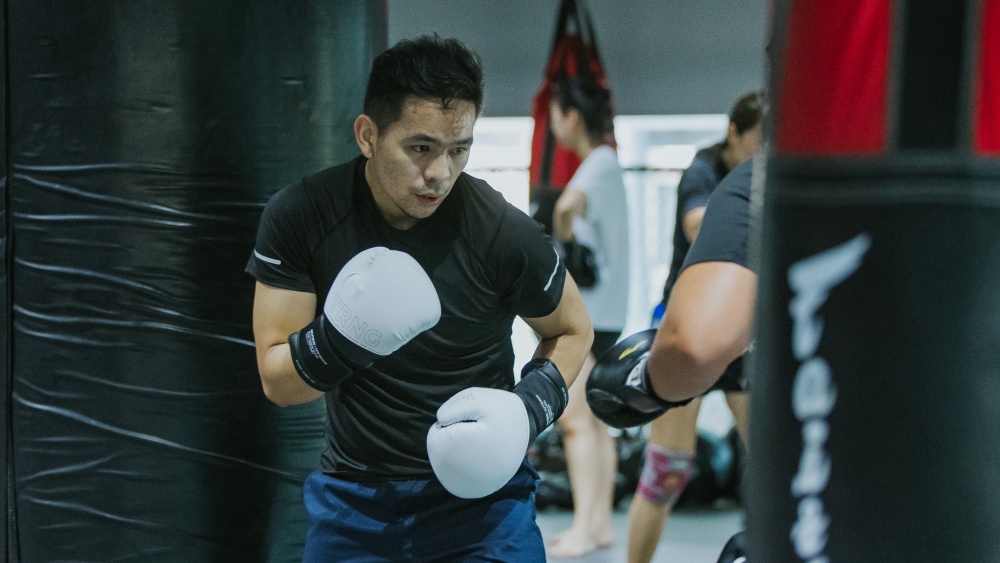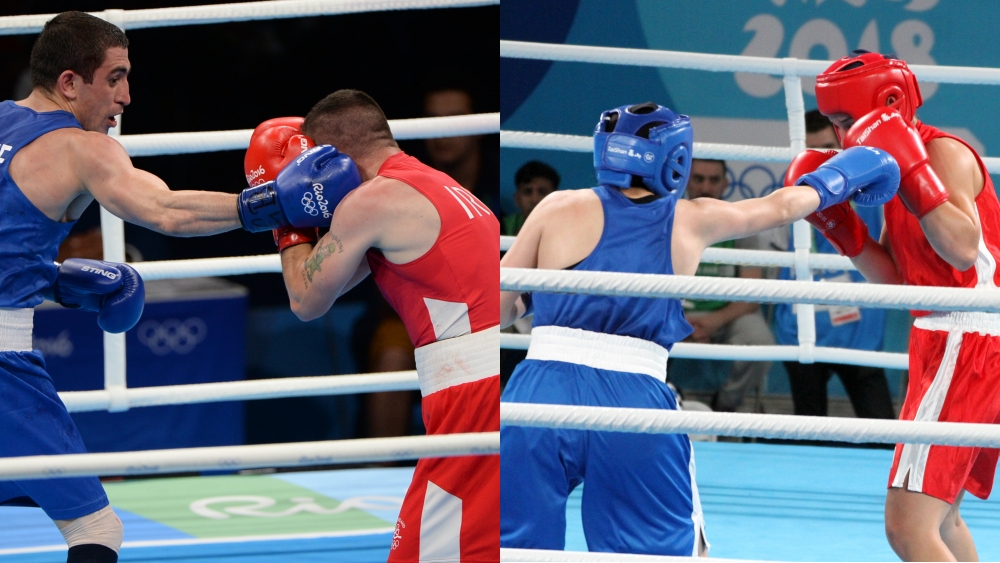You’ve probably watched professional boxers bob and weave their way through salvos without getting hit cleanly once and wondered how they ever learned that skill. As impressive as bobbing and weaving can be, it’s a pretty simple boxing skill to learn. It’s even classified as one of the most basic defensive movements in boxing, yet it’s one of the most effective defensive techniques at all levels.
Bobbing and weaving is a crucial skill that shorter boxers must learn to close the distance on opponents to land combinations. Those who don’t will struggle to close the distance on rangier opponents. Many of the most aggressive brawlers in boxing history, like Mike Tyson and Joe Frazier, enjoyed lots of success inside the ring thanks to their ability to bob and weave their way into inside range.
Mastering The Bob And Weave
Making the bob and weave part of your defensive arsenal is as simple as learning the proper mechanics and drilling the movement until you don’t even have to think of it. Your head automatically knows what to do when punches come your way.
Here’s how to properly perform the technique:
Step 1: Bob
Start in your fighting stance and stay right at the edge of your opponent’s range with both arms up in guard position. Focus your eyes on your opponent’s chest or face so you can easily spot movements with either arm.
Bend at the knees when your opponent throws a punch and tilt your torso slightly forward. Bending your knee is the “bobbing” part of the technique. You should bend enough at your knees that an imaginary punch goes over your head even if you don’t weave.
Return to your fighting stance after bobbing. Avoid bending at your torso when bobbing since that takes your eyes off your opponent and leaves you vulnerable to shovel hooks and uppercuts.
Step 2: Weave
Once you have how to bob down, it’s time to practice the “weaving” part. Weaving is simply putting multiple slips together. Slipping is often confused with weaving, but they are two different techniques. A slip involves moving your head off the centerline (to the outside) as a straight punch approaches you so the punch “slips” right past your head. Combining multiple slips is called weaving.
Try not to lean too far on either side when slipping since that can leave you unbalanced. A properly executed slip is a conservative movement that narrowly gets your head out of a punch’s way. Observe defensive masters like Floyd Mayweather, and you’ll notice their heads barely get out of the way when slipping. When done correctly, slipping is one of the most effective ways to evade straight punches since you don’t take any damage from the punch.
Step 3: The Bob And Weave
The bob and weave is simply combining the two movements described above. Start bobbing, using your knees to drop the level of your head. Now, start working in some slips as you bob. Slipping while bobbing forces your head to move in a V-pattern. Chain multiple slips with your bobs, and you’re now bobbing and weaving. Remember to keep your chin tucked while bobbing and weaving so you can take the impact of any punches that manage to find their target.
Step 4: Bobbing And Weaving While Moving
Start in your fighting stance and move forward as you bob and weave. Take a few steps back sporadically to practice your bobbing and weaving skills while moving backward. The goal of bobbing and weaving is to ensure your head isn’t in the same spot for too long, making it challenging for opponents to land clean shots on you. The technique is particularly effective when an opponent traps you against the ropes. You can evade barrages of punches with it and spin out of tight spots.
Bobbing and weaving puts you in situations to land hard counters on opponents. When done correctly, the movement puts you on the outside of your opponent’s attacks, leaving you in an excellent position to fire off a hard counter hook or cross.
Common Mistakes Beginners Make When Bobbing And Weaving
Now that you understand the basics of the bob and weave, let’s go over some of the most common mistakes people make when learning the movement:
- Moving Your Head From Side To Side Instead Of Bobbing: Technically speaking, there’s nothing wrong with moving your head from side to side. It’s a defensive movement called slipping, and it’s also an effective way to avoid punches. However, you shouldn’t try to slip punches when you’re down bobbing. Your hips and head don’t move quickly in that position, leaving you vulnerable to punches. Instead, start your slip as you lower your body and return to an upright position, so your head moves in a V-pattern. This allows you to evade punches from multiple dimensions. It’s a tiny detail that makes a massive difference inside the ring.
- Bending Too Low: Bending too low can get you in trouble with the referee since it’s illegal in boxing. Bending too low also prevents you from coming back up quickly enough to fire off counters at your opponent.
- Bending At The Waist: Remember to only bend at your knees, not your waist, when bobbing and weaving. Bending at the waist can leave you unbalanced and vulnerable to your opponent’s uppercuts. It also makes it harder for you to anticipate your opponent’s attacks since it takes your eyes off your opponent’s chest.
- Moving In The Same Direction As A Punch: This little mistake can get you in serious trouble inside the ring. You might have earned a fighter saying something along the lines of, “I should have zagged when I zigged.” They are talking about this: slipping toward the direction of a punch instead of slipping away from it. For instance, if an opponent throws a straight punch at you with their left hand, you don’t want to move to your left since that leaves you open to attacks thrown by their other hand. What you should do is move in the opposite direction of the punch, so you end up at an angle where your opponent cannot attack you with either hand.
- Dropping Your Hand When Bobbing And Weaving: This bad habit can leave you in a world of trouble. Always keep your hands up, guarding your head when bobbing and weaving. Even the slickest boxers around still get hit during their fights, so don’t fall in love with your ability to bob, weave, and drop your guard. You might get away with it for months or years, but someone will eventually catch you with your guard down and teach you a painful lesson.
- Squaring Up: Try not to keep your body squared up with your opponent when bobbing and weaving since that makes you a larger target. Instead, stay in your boxing stance so one foot is ahead of the other and your body is diagonal to your opponent. You’ll be more balanced this way while making yourself a trickier target for your opponent.
Effecting Bob And Weave Drills
Now that we’ve gone over the basics of bobbing and weaving let’s take a look at some ways you can practice the movement so it becomes part of your muscle memory.
1) Stationary Drills
Stationary drills are the most straightforward way to practice defensive movements like bobbing and weaving. You don’t need any equipment for these drills; you can do them anywhere you have enough space to move around.
You can use stationary drills as part of your warm-ups and cool-downs while practicing your bob and weave skills. Focus on making each part of the movement fluid and deliberate. Feel free to break the movement into two distinct movements if you’re new to the technique. You can practice the bob and weaving slips together independently.
Perform some stretches before practicing the bob and weave since it requires moving your head a lot. Practice the movement until you can perform it fluidly on command. Try not to move your head in predictable patterns when practicing the bob and weave since opponents can take advantage of that inside the ring. An intelligent boxer doesn’t chase your head when you’re bobbing and weaving. They anticipate where your head will be and target those places with their punches.
Having good leg strength and balance also enhances your ability to bob and weave, so make sure you regularly perform unilateral leg exercises that increase your balance and leg strength.
2) Perform Rope Drills
Another effective way to improve your bobbing and weaving skills is by setting up a rope to represent your opponent’s centerline and bobbing and weaving around the rope. It’s easy to set up; you’ll only need a rope and two points to anchor it. The turnbuckles of a boxing ring are excellent for the job. If not, find something else you can use to anchor down a rope at chest level.
Once the rope is set up, work your way down from one end of the rope to the other, bobbing and weaving with each step you take and ending up on the opposite side of the rope. Add some combinations to your defensive movement as your abilities improve for a greater challenge. Bob and weave, fire off a combination, and end up on the opposite side of the rope. Adding punches to the drill allows you to simultaneously improve your counter-punching abilities while working on your head movement.
3) Focus Mitt Drills
Working with an instructor or training partner holding a pair of focus mitts is another effective way to improve your ability to bob and weave. Working with an instructor is ideal since they’ll be able to give you feedback on anything you’re doing wrong. An instructor will reduce or increase the intensity of the drills based on your current abilities and gradually increase the intensity until you can bob and weave from fast punches with ease. Many experienced boxers would argue that bobbing and weaving while working focus mitts is one of the most effective ways to prepare a fighter for bobbing and weaving against real opponents.
4) Shadowboxing
If you don’t already know, shadowboxing is one of the most effective training tools boxers have. When done correctly, it allows you to practice any of the techniques you would use in a real fight. The key to getting the most out of your shadowboxing sessions is taking it seriously and training like you have a real opponent in front of you.
Visualize a rangier opponent in your mind, and bob and weave to avoid their imaginary punches as you close the distance on them. Fire off a few sharp counters once inside, step back, rest, and do it all over again.
Ideally, you want to shadowbox in front of a mirror so you can see flaws with your technique as you work. Remember, the better you are at visualizing an imaginary opponent while shadowboxing, the more you’ll get from your training sessions. You can even bob and weave against your reflection’s punches when shadowboxing to make things more interesting.
5) Sparring
Nothing compares to sparring in terms of preparing you to bob and weave against real opponents. Start with slow sparring sessions, so you get more time to react to your opponent’s punches. Once you can effectively evade the punches being thrown your way, pick up the speed until you’re sparring at full speed and bobbing and weaving with ease.
Spar often and regularly, so you get your timing down to the point where bobbing and weaving becomes a reflex action you instinctively perform when punches come your way. Any time invested in defensive movements like bobbing and weaving is time well spent since the technique remains extremely effective at the highest levels.
Get More Boxing Tips
Thinking about giving boxing a try? Come to one of Evolve’s introductory complimentary boxing classes to experience firsthand what training with world champions is like.
Book your complimentary trial class with our World Champions below!
If you have any other questions regarding Evolve MMA and the programs we offer, you can get in touch with our membership executives at the following locations:
Evolve MMA (Far East Square)
26 China Street
Far East Square #01-01
Singapore 049568
Phone: (65) 6536 4525
Evolve MMA (Orchard Central)
181 Orchard Road
#06-01 Orchard Central
Singapore 238896
Phone: (65) 6536 4556
Evolve MMA (KINEX)
11 Tanjong Katong Road
#02-52 KINEX
Singapore 437157
Phone: (65) 6288 2293
Evolve MMA (Clarke Quay Central)
6 Eu Tong Sen Street
#04-18 Clarke Quay Central
Singapore 059817
Phone: (65) 6226 2150
Evolve MMA (Star Vista)
1 Vista Exchange Green
#02-26A The Star Vista
Singapore 138617
Phone: (65) 6539 9590
